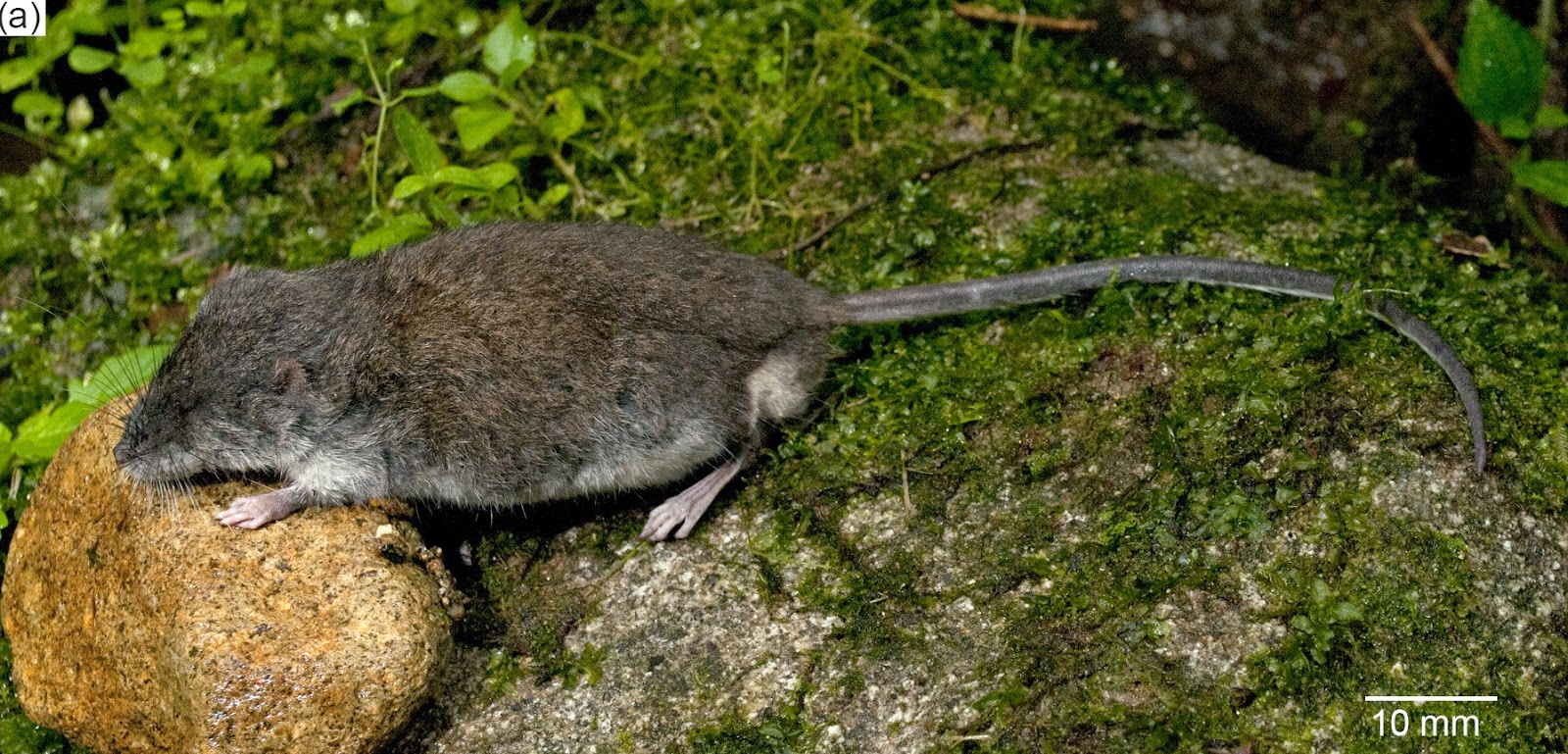Water Rats are large Rodents that have adopted a semi-aquatic lifestyle and carnivorous diet, consuming Insects and other small invertebrates rather than plant matter. They are a polyphyletic group, having arisen separately in New Guinea, Africa and South America. This is apparently a successful lifestyle, as Rodents from all three areas show convergent evolution with both one-another and also species of Shrew and Tenrec (African Tree-hedgehogs) that have adopted the same lifestyle.
In a paper published in the journal Zootaxa on 17 June 2014, Kevin Rowe of the Sciences Department at Museum Victoria, Anang Achmadi of the Museum Zoologicum Bogoriense at the Research Center for Biology and Jacob Esselstyn of the Museum of Natural Science and Department of Biological Sciences at Louisiana State University, describe a new species of Water Rat from lower montane rainforest on the high plateau of Mount Gandangdewata on Sulawesi, Indonesia.
The new species is named Waiomys mamasae, where ‘Waiomys’ is a combination of ‘wai’ the word for water in the local Mamasa Toraja language and ‘mys’, which is Greek for ‘mouse’, and ‘mamasae’ refers to the town of Mamasa, which is close to the site where the new species was discovered, and to the Mamasan people of the area, who collected the specimen from which the species is described, and who have long been aware of the species.
Waiomys mamasae in life. Kevin Rowe in Rowe et al. (2014).
Waiomys mamasae is a small, dark grey Rat with a body about 25% longer than its body. It has dense underfur, but only sparse guard hairs emerging from this, these being brown on the dorsal surface (back) and white on the ventral surface (belly). Its eyes are small and almost hidden in its fur.
Waiomys mamasae is a member of the family Muridae (True Mice), as are the Water Rats of New Guinea, however it is only distantly related to them, and appears to have evolved an aquatic carnivorous lifestyle separately and convergently.
Stream on Mount Gandangdewata where type specimen was collected. Specimen was collected within 20 meters where the photo was taken. Shallow riffles shown in photo are consistent with the description of the site by locals who caught the animal. Kevin Rowe in Rowe et al. (2014).
Sulawesi is a volcanic island not thought to have been connected to any other land-mass in the last 10 million years. It is surrounded by Sunda Islands, which are part of the Eurasian continental shelf, the Sahul Islands, which are part of the Australian continental shelf, as well as the Philippines and islands of Wallacea, which are oceanic in origin. As such it has been colonized by relatively few groups of organisms, and those have often undergone dramatic evolutionary radiations into new niches. Murid Rodents are one of these groups, and comprise about 30% of the Mammalian fauna of the island, filling a number of ecological niches that are filled by animals from different groups elsewhere.
Mount Gandangdewata lies in the west-central highlands of Sulawesi, an area of old-growth tropical rainforest that has been poorly studies by biologists. Rowe et al. visited the area in 2011 and 2012, finding 22 different species of Murid Rodents, at altitudes of between 200 and 2600 m, mostly above 1500 m. Organisms living at higher altitudes tend to be more endemic (restricted in range) than organisms at lower altitudes, as high altitude mountains and plateaus effectively form islands, cut from similar environments by areas of lowlands.
Maps of (a) Southeast Asia, showing the position of Sulawesi Island and (b) Sulawesi, showing the type locality of Waiomys mamasae (Mt. Gandangdewata [diamond]). Rowe et al. (2014).
See also…
All South American Rodents are classified as members of a single monophyletic group, the Caviomorpha. This appears to be most closely related to Rodents with African and Asian distributions; a single fossil from the Early Oligocene of Egypt has been described as a possible Caviomorph. This suggests the Caviomorphs colonized...
Shrews (Soricidae) are small insectivorous or omnivorous Mammals found across much of the world, the only major landmasses from which they are absent being Australia, New Zealand and New...
 New Caviomorph Rodents from the Early Oligocene Tinguiririca Fauna of the Andean Main Range of central Chile
New Caviomorph Rodents from the Early Oligocene Tinguiririca Fauna of the Andean Main Range of central Chile
All South American Rodents are classified as members of a single monophyletic group, the Caviomorpha. This appears to be most closely related to Rodents with African and Asian distributions; a...
Follow Sciency Thoughts on Facebook.





